Advair vs Spiriva
Advair vs Spiriva: Is Advair and Spiriva the same? To know this, a Brief Introduction to both medications is given below:
Advair:
- Advair:
- Spiriva:
- Advair vs Spiriva: Diseased conditions and treatments
- Can Advair and Spiriva be taken together?
- Which is better for asthma – Advair vs Spiriva?
- Advair vs Spiriva- Which one to take first?
- How often should you use your inhaler?
- Risk Factor:
- End Note:
- FAQs:
- When to take Spiriva morning or night?
- Is Advair a strong steroid?
- What is better for COPD Spiriva or Ellipta?
- How long to wait between Advair and Albuterol?
- Is Spiriva a steroid inhaler?
- Do Spiriva and Advair do the same thing?
- Does Advair improve lung function?
- What is the most common side effect of Spiriva?
- Can you take Advair and Spiriva together?
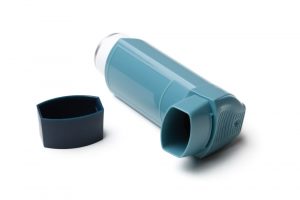
Fluticasone and Salmeterol are the two medications in Advair. Fluticasone belongs to the corticosteroid class of medicines. It helps by alleviating airway irritation and edema. Salmeterol belongs to the long-acting beta-agonists class of medicines.
It works by relaxing the muscles surrounding your airways, allowing you to breathe more easily. Controlling the symptoms of breathing issues can help you get back to work or school faster. Long-acting beta-agonists (such as Salmeterol) can raise the risk of serious (and occasionally deadly) asthma-related respiratory issues when used alone.
Proper usage of this medicine is highly recommended. Inhaled corticosteroid and long-acting beta-agonist combinations, such as this one, do not raise the risk of significant asthma-related breathing issues.
What is Advair used for? This product should be used for asthma therapy when breathing issues are not effectively achieved with a single asthma drug (such as an inhaled corticosteroid) or if your symptoms require a combination of medications.
It is perilous to learn how to utilize this drug properly before using it. To be successful, this drug must be used daily. It does not act immediately and should not be used to treat asthma attacks that occur suddenly.
Use your quick-relief inhaler (such as Albuterol, also known as salbutamol in some countries) as focused if you have an asthma attack. To get a lower price on this medication, the Advair coupons are available on e pharmacies or some drug shops.
| Medication | Price | Shop |
| Advair Diskus 100mcg/50mcg | $6.61/30 Dose | Check Now |
| Advair Diskus 250mcg/50mcg | $17.67/60 Dose | Check Now |
| Advair Diskus 500mcg/50mcg | $11.16/30 Dose | Check Now |
Spiriva:
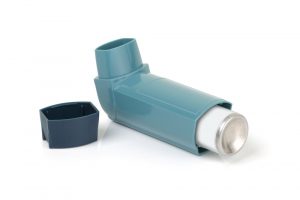
Tiotropium is used to treat and avert the symptoms of chronic lung illness (such as wheezing and shortness of breath) (chronic obstructive pulmonary disease-COPD which includes bronchitis and emphysema).
Spiriva use: Relaxing the muscles surrounding your airways, allowing you to breathe more easily.
Tiotropium is a member of the anticholinergic pharmacological class. Controlling the symptoms of breathing issues can help you get back to work or school faster. To be successful, this Tiotropium inhaler must be used regularly. It does not function immediately and should not be used to treat respiratory difficulties that arise suddenly.
Use the quick-relief inhaler (such as albuterol, also known as salbutamol in some countries) as directed if the patient has wheezing or sudden shortness of breath.
| Medication | Price | Shop |
| Spiriva 18mcg | $10.20/30 Rotacaps | Check Now |
Advair vs Spiriva: Diseased conditions and treatments
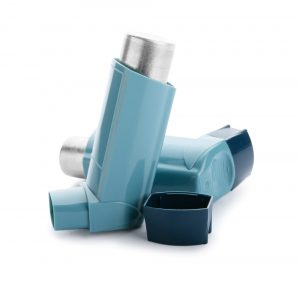
COPD is a lung condition that curbs airflow and makes it difficult to breathe. Cigarette smoking is the most common cause of lung damage that leads to COPD. Other irritants, such as cigar or pipe smoke, air pollution, and some occupational exposures, can also induce COPD. COPD can be caused by a genetic condition that causes low amounts of alpha-1-antitrypsin, a protective protein.
When the airways in the lungs (bronchial tubes) become inflamed and restricted, asthma develops. Allergies or viral infections may be the cause. The airways enlarge due to inflammation, the muscles of the bronchial walls tighten, and the airways create additional mucus, all of which contribute to increased obstruction during an asthma episode.
COPD and Asthma symptoms can be managed with a variety of drugs. Bronchodilators work by relaxing the muscles surrounding your airways, allowing you to breathe more easily and reducing coughing and shortness of breath. Taking two medications that do almost the same thing may seem strange like Advair and Spiriva for COPD.
Bronchodilators are divided into two categories: Beta-agonists and Antimuscarinic. To free up the airways, they use a variety of techniques. Albuterol and Ipratropium are examples of short-acting bronchodilators. Tiotropium (Spiriva, an antimuscarinic), Salmeterol, and formoterol are examples of long-acting bronchodilators (Serevent and Foradil, both beta-agonists). The long-acting bronchodilator in Advair is Salmeterol.
Several studies have shown that combining the two types of bronchodilators you’re taking with an inhaled corticosteroid recovers COPD symptom control, exercise tolerance, and pulmonary function. Tiotropium side effects include Dehydration, skin ulcer/ papules, stomatitis, gingivitis, oropharyngeal candidiasis, dry skin, skin infection, and joint swelling.
In all but the slightest forms of asthma, inhaled corticosteroid drugs are required for asthma. They’re also used to treat COPD patients who have frequent “exacerbations,” which are transient worsening of symptoms caused by infections or irritants. These medications operate by lowering airway inflammation, making it easier to breathe.
Consult the doctor if they experience side effects that appear to be caused by a medicine. Alternative medicines have the potential to be effective. A leukotriene blocker, such as Montelukast (Singulair), is one option for treating asthma. Both asthma and COPD patients can benefit from Theophylline.
Recent research has established that taking theophylline at lower levels than previously used has a noteworthy advantage. However, for smokers with COPD, quitting smoking is the most vital step in any therapy regimen. It’s the only thing that’s been shown to reduce the progression of COPD and enhance COPD survival. Smokers who need assistance quitting should speak with their doctor about options for stopping, including medicines.
For patients with asthma or COPD, annual influenza vaccination is especially crucial. Some pessimists believe asthma and COPD are incurable diseases. While this is true for most chronic conditions, with adequate treatment, many cases of mild asthma go into remission or show few symptoms.
Most instances of COPD are minor, requiring only smoking cessation, vaccinations, and the use of bronchodilators on occasion. Symptom control and quality of life can be considerably improved in more severe instances of asthma and COPD by using appropriate drugs and pulmonary rehabilitation.
Exacerbations must be treated quickly and aggressively for patients with moderate to severe asthma or COPD. Only the most severe cases require chronic oxygen therapy. Surgery, such as lung transplantation and lung volume reduction, can help a small number of people with severe COPD. Hence, a combination of medications like Advair and Spiriva are recommended for better usability.
Can Advair and Spiriva be taken together?
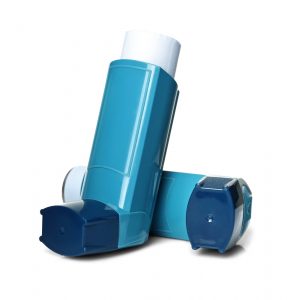
They are both anti-inflammatories. As known, everyone’s asthma is different, and one person’s asthma may be more difficult to control than another’s. As a result, it is the doctor’s responsibility to work with you to choose the optimal combination of medications to control your asthma.
Advair is a first-line treatment for asthma since it usually works well on its own to bring the condition under control. If Advair medication (available as Advair Diskus inhaler) alone isn’t working, the doctor may switch to a second-line medication like Spiriva inhaler.
However, Advair medication holds both a corticosteroid (Flovent) and a long-acting bronchodilator (Serevent) to address the underlying inflammatory component of asthma and avoid bronchospasm (airway narrowing). The beta-adrenergic drug Serevent produces bronchodilation (relaxes smooth muscles). It quandaries beta receptors in the lungs, causing the muscles in the lungs to relax.
Spiriva is a long-acting bronchodilator that works by constraining cholinergic receptors in the lungs, which when triggered, cause bronchoconstriction (airway narrowing). As a result, Spiriva is an anticholinergic drug. It’s often described as a “back-door bronchodilator” in this regard. It is a second-line medication for asthma because it is not as operative as Serevent as a bronchodilator.
Spiriva, on the other hand, has been shown in recent studies to enhance lung function in COPD patients and some difficult-to-control asthma cases. A Spiriva inhaler is a helpful medicine to “try” in addition to the prescribed front-line asthma medicines if front-line asthma medicines like Advair do not control asthma.
Of course, there’s always the possibility that the doctor prescribes both Advair and Spiriva for a different reason. As a result, it is always a good idea to speak with the doctor to ensure safety measures and precautions.
Which is better for asthma – Advair vs Spiriva?
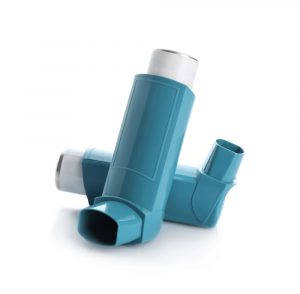
Patients with severe COPD who were given Advair or Spiriva had a similar rate of COPD attacks, but Advair patients were half as likely to die. The findings came from a side-by-side comparison of Advair medication with Spiriva in the treatment of individuals with severe chronic obstructive pulmonary disease (COPD). The study was supported by GlaxoSmithKline, the maker of Advair.
Does this imply that Advair is the most effective treatment? Certainly not. The study’s primary goal was to examine if one of the COPD therapies reduced disease exacerbations or sudden episodes. In terms of preventing COPD attacks, both medications were equally beneficial. During the two-year research, 39% of the participants did not experience a COPD exacerbation.
Surprisingly, patients on GSK’s Advair were just half as likely to die throughout the two-year research as those taking Pfizer’s Spiriva. Throughout the two-year research, 3% of Advair patients and 6% of Spiriva patients died, even though individuals on Advair were more likely to have had a bout of pneumonia.
Despite the statistical significance of this difference, the trial was not large enough to indicate that patients on Advair are less likely to die than those on Spiriva.
Advair vs Spiriva- Which one to take first?

A person doesn’t have to wait between puffs, according to the new knowledge, if the patient is taking 2 medications. However, proper usage of inhalers is sturdily recommended.
Partners Healthcare: Asthma Center experts explain:
“If you use your inhaler multiple times in a row without pausing between “puffs,” it may start to dispense medication inconsistently. Cooling occurs at the metal nozzle of the canister due to evaporation, potentially intrusive with its accurate functioning and administration of the same amount of medication every time.
Slow, deliberate inhalations tailed by brief breath-holding, on the other hand, allow ample time between puffs to avoid any issues. They advise that waiting a full minute between inhalations has no basis. Delaying one minute before taking the next “puff” from your metered-dose inhaler provides no benefit and merely adds to your medication annoyance and impatience.”
In terms of puff intervals, one to two minutes is usually sufficient for all inhalers, regardless of whether a person is taking a second puff of the same inhaler or switching to a new medicine inhaler. One minute is commonly regarded as the bare minimum, and two minutes is more than enough in terms of mechanics. This answers the question of the waiting time for puffs of inhalers.
But if a patient takes more than one inhaler, then?
The experts answer this as there are no clear, well-documented answers to the question. The literature, on the other hand, has addressed this topic to some extent.
For example:
First, it seems unlikely that the order in which the inhalers are administered will make a significant effect. Bronchodilators should be given before inhaled corticosteroids, according to the theory that “opening the bronchial passages” would allow for better-inhaled corticosteroid deposition. Adequate bronchodilation, on the other hand, takes time.
It normally takes 15 to 20 minutes after inhaling a short-acting bronchodilator or formoterol (Symbicort, Dulera) to achieve it, and it takes much longer after Salmeterol (Advair). This is typically inconvenient and impractical, and there is no good evidence in the literature to imply that it improves treatment outcomes. As a result, the order in which two distinct types of inhalers are administered is unimportant.
Another reason for the change is that if a person takes asthma control drugs (Advair, Symbicort, Azmanex, Qvar, Dulera, Breo, and Spiriva) as directed every day, they should not use a rescue inhaler (albuterol) until they are short of breath. In other words, on most days, a person should not use a rescue inhaler. As a result, the lungs should be adequately open for the controller inhalers to function without the need for a rescue inhaler.
It would still recommend using this inhaler first when a prescription that provides fast relief (such as albuterol, Advair, Symbicort, or Dulera) is due. Other bronchodilators (such as Spiriva) should be taken second, followed by any other inhalers.
How often should you use your inhaler?

All of these bronchodilator inhalers are supposed to work for roughly 4-6 hours after a person takes them. As a result, the straightforward answer to the preceding question is that using these inhalers 4-6 times per day is safe.
When asthma flares up and a person has an attack, the situation changes. If a person has ever visited a hospital’s emergency room for an asthma attack, he/she knows that bronchodilator drugs might be administered as frequently as every 20 minutes for immediate relief. At home, the same is true.
If the person’s asthma symptoms have increased and he/she needs relief quickly, they can safely use the inhaler every 30-60 minutes for 2-3 hours without risking serious side effects. Using bronchodilator inhalers at this frequency for such a short length of time poses no risk to the heart unless the person has known significant heart disease. In such cases, physician direction is required promptly.
Risk Factor:
There is a risk of overusing bronchodilator inhalers, but there is no risk to the heart. The danger is that relying too heavily on a medication that simply relaxes the muscles surrounding the breathing tubes would cause a delay in the administration of other, more necessary treatments to lessen the edema and congestion of the breathing tubes.
Advair side effects, that is to say, while the bronchodilator inhaler may provide temporary relief from asthmatic symptoms, asthma may be deteriorating as the breathing tubes swell and fill with mucus. Bronchodilators can be overused to the point of postponing other, more important therapies, such as steroid medicines administered as tablets.
End Note:
Always check with your healthcare practitioner to make sure the information on Advair and Spiriva on this page pertains to your specific situation.
FAQs:
When to take Spiriva morning or night?
Spiriva can be taken in the morning or at night. However, try to take it at the same time every day.
Is Advair a strong steroid?
Yes, it is a combination of a long-acting bronchodilator. It is a medication that is used to treat asthma and COPD.
What is better for COPD Spiriva or Ellipta?
The choice between Spiriva and Ellipta depends on various factors including the severity of COPD, individual patient response, and presence of other medical conditions. Generally, Spiriva is preferred for maintenance treatment due to its effectiveness in improving lung function and reducing exacerbations. Ellipta inhalers may be used as combination therapies, particularly in patients who require both a bronchodilator and an inhaled corticosteroid. Ultimately, the decision should be made in consultation with a healthcare provider based on the specific needs and health status of the patient.
How long to wait between Advair and Albuterol?
When using both Advair (which contains a combination of fluticasone, an inhaled corticosteroid, and salmeterol, a long-acting beta agonist) and albuterol (a short-acting beta agonist), it’s generally recommended to wait at least 5 minutes between using these medications. This allows each medication to be effective without interference from the other.
Advair is typically used for long-term maintenance therapy to control asthma or COPD symptoms, while albuterol is used for quick relief of symptoms such as shortness of breath or wheezing.
Is Spiriva a steroid inhaler?
No, Spiriva (tiotropium) is not a steroid inhaler. It belongs to a class of medications known as long-acting anticholinergic bronchodilators. Spiriva works by relaxing the muscles around the airways to improve breathing in conditions like chronic obstructive pulmonary disease (COPD) and sometimes asthma.
Steroid inhalers, on the other hand, contain corticosteroids (such as fluticasone or budesonide) and are used to reduce inflammation in the airways. These steroids help prevent asthma attacks and manage symptoms of COPD.
Do Spiriva and Advair do the same thing?
Yes, both are different. The treatment of chronic obstructive pulmonary disease (COPD) is authorized for Spiriva. Advair is licensed to treat COPD and asthma. Research has demonstrated several benefits of triple therapy, such as yours, for individuals with moderate to severe COPD.
Does Advair improve lung function?
It comprises salmeterol and fluticasone, two medicines. Fluticasone is a member of the corticosteroid medication class. It functions by lessening airway inflammation and oedema. Salmeterol is a member of the long-acting beta-agonist drug class.
What is the most common side effect of Spiriva?
When using Spiriva, patients with COPD most frequently report sore throat, cough, dry mouth, and sinus infection as adverse effects. Among adult asthma patients, sore throat, headache, bronchitis, and sinus infection were the most frequent side effects.
Can you take Advair and Spiriva together?
No, it is not recommended to take both medications together. It can trigger adverse reactions when taking both.
Related Articles:
https://www.offshorecheapmeds.com/blog/best-selling-copd-inhalers/ https://www.offshorecheapmeds.com/blog/connection-between-copd-and-covid-19/

